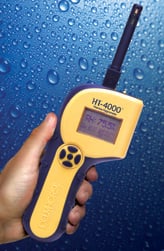 When a structure becomes compromised by moisture, whether that structure is commercial or residential, there is a risk for both damage to the building and harm to the occupants of that building. Water damage can weaken important structural supports, cause damage to a building’s foundation, and encourage the growth of black mold and bacteria in building materials.
When a structure becomes compromised by moisture, whether that structure is commercial or residential, there is a risk for both damage to the building and harm to the occupants of that building. Water damage can weaken important structural supports, cause damage to a building’s foundation, and encourage the growth of black mold and bacteria in building materials.
It is because of the severity of the risks attached to water damage in a building that home and business owners contract the services of water damage restoration and IAQ specialists following a flood or other situation where a building becomes moisture-compromised.
But, how can these specialists reliably identify moisture compromised structures and verify that their restoration work is complete? By making use of moisture meters to check the %MC of building materials, and using thermo-hygrometers to check the ambient humidity in structures that may be moisture-compromised.
How Thermo-Hygrometers Work
There are a number of different types of thermo-hygrometers types, so many that it would be difficult to list them all here and give a detailed explanation of each. So, we’ll talk about what makes thermo-hygrometers different from moisture meters instead.
Where a moisture meter is typically employed to measure the moisture content of a solid object, such as wood flooring or a piece of drywall. A thermo-hygrometer, on the other hand, tests for the ambient humidity of the air in a given area.
Thermo-Hygrometers can test for GPP, Dew Point, and ambient temperature in addition to providing a measurement of the moisture in the air. These measurements give water damage and IAQ experts useful statistics for establishing things such as mold risks in a structure.
Why Use Thermo-Hygrometers for Water Damage Restoration?
For moisture damage restoration and mold remediation, the usefulness of moisture meters is undeniable for helping to pinpoint the location of stubborn moisture pockets that might pose a risk. So, why would these restoration experts need to use thermo-hygrometers as well?
First, an ambient moisture reading from a thermo-hygrometer can help to establish whether or not a given area possessed excess moisture that would pose a risk to the structure. If a specific room or area of the building returns high ambient moisture readings, then it is very likely that there is a pocket of excess moisture somewhere in that area. This allows restoration specialists to focus their search, saving time.
Second, thermo-hygrometers serve as an excellent way to establish that water removal efforts are working. By taking relative humidity and temperature readings outside the building, in each room, and at the output of a dehumidifier, the technician has vital information to help determine if the appropriate drying equipment is being used. Comparing readings in each of these areas on a daily basis allows the technician to make informed decisions – is there enough air movement and dehumidification? Is it time to remove drying equipment? Using a thermo-hygrometer to measure temperature and relative humidity, and calculate Grains Per Pound (GPP), in conjunction with a moisture meter, is the only way to gather this important information.
With the right thermo-hygrometers, identifying areas that are at risk of excess moisture damage and verifying that moisture has been properly remediated is as simple as hitting a button and reading the screen.

Comments